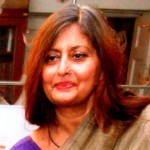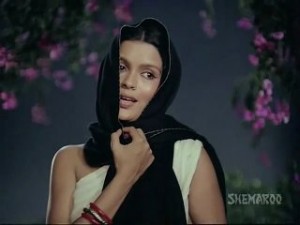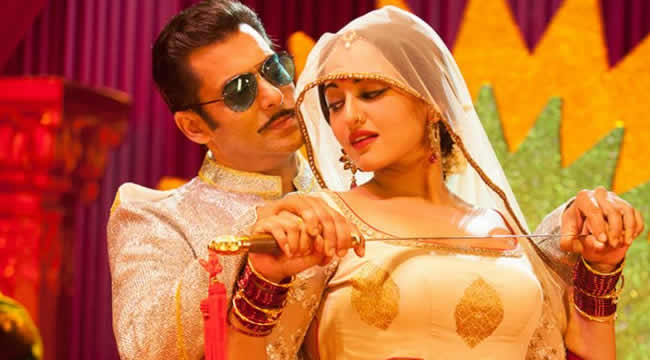We talk of rape and its punishment, but how about changing our mindsets? And Bollywood can make the first move.
 by Humra Quraishi
by Humra Quraishi
At this point, it is becoming pointless to write over and over again of Delhi and how ruthless it is with its women and children. It is becoming pointless even to count the numbers of rapes taking place in the country, of the many atrocities committed on prisoners inside jails, of how so many innocent young boys go missing after the police pick them up for interrogation.
But as of now, incidents of rape are getting attention like never before, and from these incidents stem discussions on how rapists should be hanged. I wonder – if we were to hang every rapist, wouldn’t Delhi be known also as the Death Capital (it is already known as the Rape Capital)? Who will hang the army men and cops who rape hapless commoners in conflict zones? Who will pass hanging orders against the bureaucrats and politicians accused of rape?
As with any other transformation, the change in this situation will come with a change in mindset. There needs to be a rethink on what constitutes manliness, what love is, what is consensual sex and why a woman’s ‘no’ does not mean ‘yes’. And the biggest change can come when those in the Government monitoring the content of our television and films get serious and do their jobs.
Are we seriously going to blame a young, impressionable mind if it thinks that Salman Khan can tease his heroine in a public place, dance more with his pelvis than with his arms and legs and finally get the girl smiling again by way of some seriously perverted dialogue, that that is the way to get women to fawn over one? Why does Bollywood keep doing this – of showing a distorted version of manliness, one that supposedly appeals to the heroine, and which must, by extension, appeal to real-life women as well?
When I last interviewed actor and compere Skekhar Suman for an essay I was writing on why there were less kissing scenes but plenty of bosom heavings and pelvic thrusts in Bollywood, I’d asked him if he ever gets attracted to his bosomy female film stars. His reply – blunt and crass though it was, and also very honest – left me with a quotable quote. He’d said, “What bosomy film stars? Don’t you know most of them stuff socks up there?”
I quoted him in the essay and to all those young boys who sat glued to their TV sets, staring enthralled at huge bosoms on screen. Two of my nephews were effectively put off by the socks anecdote, saying that there was “nothing more to see” on TV.
I also quote from Khushwant Singh’s autobiography, Truth, Love And A Little Malice (Penguin) for an example of how the typical male mind functions in Bollywood. “Being the editor of a popular weekly, I was much sought-after by the film industry. I never was, nor am, much of a film-goer. And the little I’d seen of Hindi movies did not generate any respect for actors, directors, producers and music composers or playback singers.
“Some of my Lahore friends had done well – Balraj Sahni, Uma Kashyap (Kamini Kaushal) and Dev Anand were highly-rated actors; BR Chopra was among the top producers-directors; Chetan Anand had many flops to his credit…My interest in film personalities was quickened by Devyani Chaubal, the younger sister of Nalini, who had worked with me briefly in London. I had read Devyani’s bitchy pieces on the private lives of film stars written in a brand of Hindustan–English (Hinglish) which I enjoyed.
“Devyani took me to Raj Kapoor’s private cinema to see the opening shots of Satyam, Shivam, Sundaram. I took along members of the Sindhi family who lived above me – Sheila, her daughter Jyoti and their maidservant Fatima, all very eager to meet the great actor.
 “Zeenat Aman was present. I sat between Raj Kapoor and Zeenat. Devyani was in the row behind with my guests. We saw Zeenat stepping out of a village pond with her wet sari clinging to her body and displaying her shapely bust. ‘I am a bosom man,’ said Raj to me with enthusiasm, ‘aren’t you?’ I agreed that shapely bosoms had their points. ‘What’s your laal paree (red fairy) like?’ he asked. He was referring to Sheila, who was draped in a bright red sari. He assumed she was my mistress.
“Zeenat Aman was present. I sat between Raj Kapoor and Zeenat. Devyani was in the row behind with my guests. We saw Zeenat stepping out of a village pond with her wet sari clinging to her body and displaying her shapely bust. ‘I am a bosom man,’ said Raj to me with enthusiasm, ‘aren’t you?’ I agreed that shapely bosoms had their points. ‘What’s your laal paree (red fairy) like?’ he asked. He was referring to Sheila, who was draped in a bright red sari. He assumed she was my mistress.
“‘I have no idea,’ I replied.
“‘Go on, you so-and-so!” he insisted. ‘She looks all right to me. But one can’t really tell what’s inside the blouse, can one?’”
Humra Quraishi is a senior political journalist based in Gurgaon. She is the author of Kashmir: The Untold Story and co-author of Simply Khushwant.
(Pictures courtesy shemaroo.com, businessofcinema.com)
